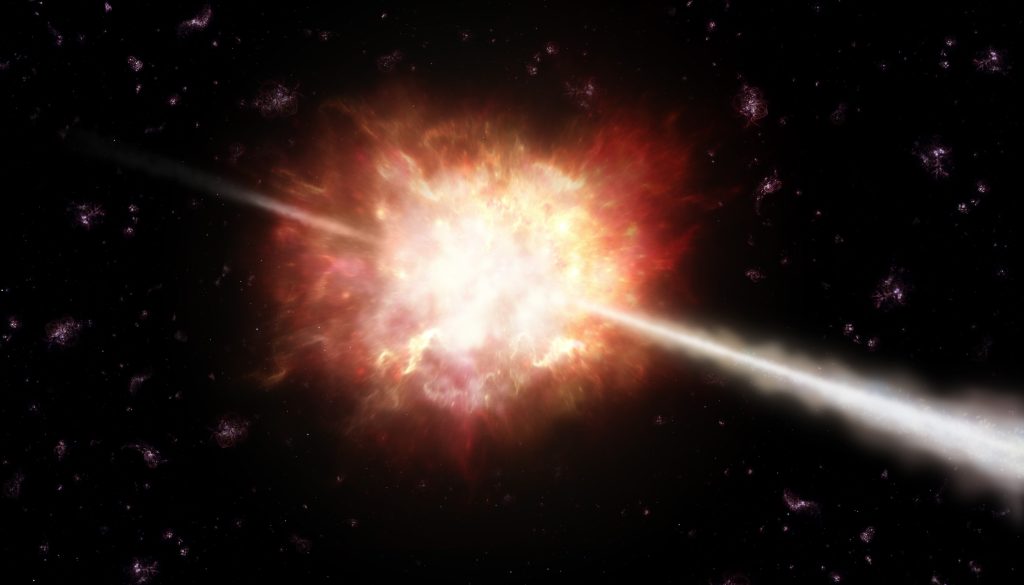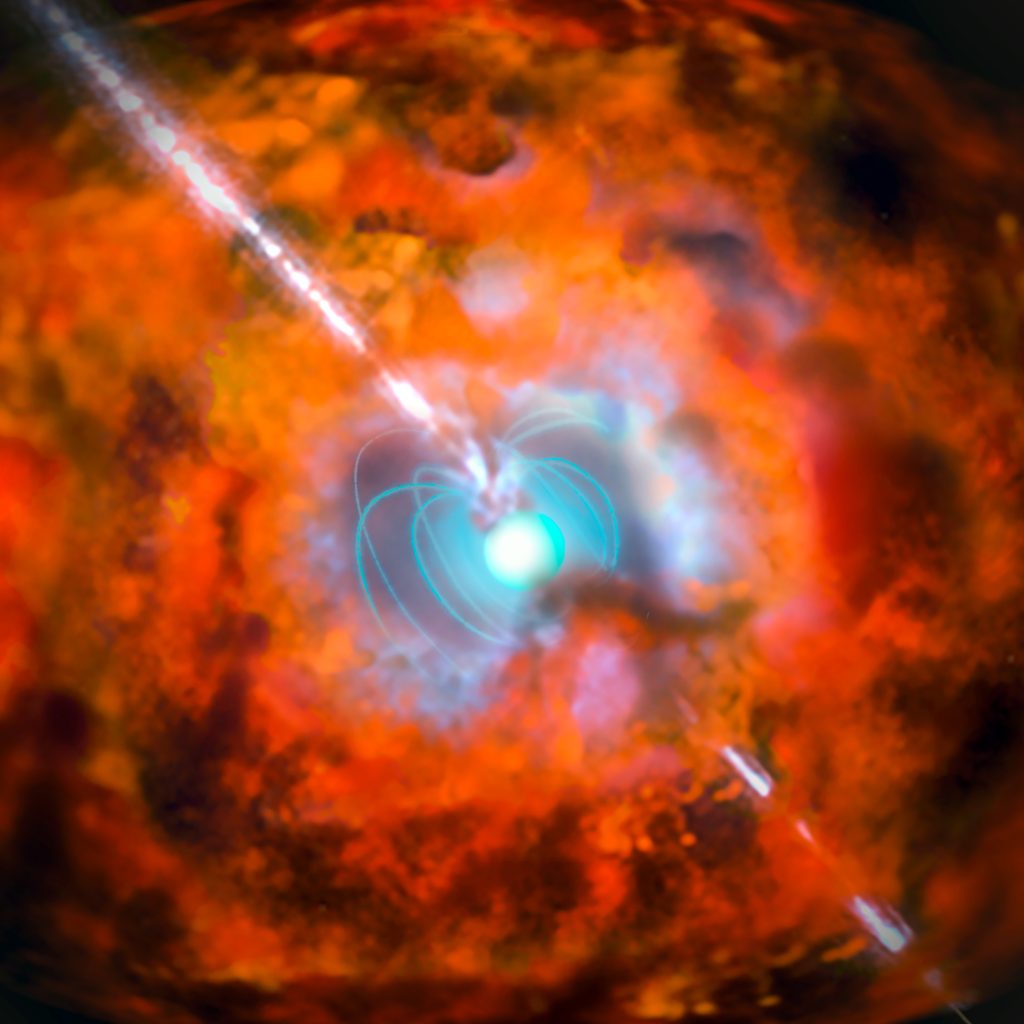Hunt for Universe’s most extreme explosions receives funding

A team from the University of Leicester has been set up to ‘chase’ some of the Universe’s most powerful explosions to probe the extreme physical forces that form them.
They will be using a suite of satellite and ground-based telescopes to rapidly hunt gamma-ray bursts (GRBs) and analyse the massive amount of energy they release thanks to a grant of £330,689 from the Leverhulme Trust.
GRBs are some of the most extreme cosmic explosions, signalling the death of a massive star, or the merger of two dense and compact neutron stars or black holes. The outflow from a GRB can reach speeds approaching speed of light, which beams the light into a narrow cone called a jet. This beaming is why we can see the jets even when they lie at vast distances from us, across the Universe.
Project lead Dr Rhaana Starling, from the University of Leicester School of Physics and Astronomy, said: “How such vast amounts of energy are released in such short timescales is one of the big questions we need to probe through GRBs. We know some of the general picture, but the details of what these jets are made of and how they radiate light as well as what kind of astrophysical objects can power them all need investigating. I will be able to look at a subset of these in this 3-year study that will reap the benefits of new space missions which the University of Leicester has helped to build and upgrades to radio arrays on the ground.”

The high energy flashes of gamma-rays that alert us to the event and the later glowing embers of the interaction of the jet with its surroundings are both thought to occur at shock fronts. The physical process happening at the shock fronts is unclear, and one theory that this new research will test is whether this is due to the reconnection of magnetic field lines at the shocks. This phenomenon of magnetic reconnection is known to occur in the Universe, most clearly seen in our Sun, but we don’t know if it plays a significant role or not in GRB outflows. Similarly, the composition of the jet itself could be dominated by matter moving outwards, or by magnetic energy density.
The research team will be taking advantage of data from new satellite missions such as SVOM and the recently launched Einstein Probe, as well as NASA’s Swift mission (for which the University of Leicester hosts the UK Swift Science Data Centre) and upgrades to the low frequency radio array, LOFAR 2.0, under development now.
The high energy flashes of gamma-rays that alert us to the event and the later glowing embers of the interaction of the jet with its surroundings are both thought to occur at shock fronts. The physical process happening at the shock fronts is unclear, and one theory that this new research will test is whether this is due to the reconnection of magnetic field lines at the shocks. This phenomenon of magnetic reconnection is known to occur in the Universe, most clearly seen in our Sun, but we don’t know if it plays a significant role or not in GRB outflows. Similarly, the composition of the jet itself could be dominated by matter moving outwards, or by magnetic energy density.
The research team will be taking advantage of data from new satellite missions such as SVOM and the recently launched Einstein Probe, as well as NASA’s Swift mission (for which the University of Leicester hosts the UK Swift Science Data Centre) and upgrades to the low frequency radio array, LOFAR 2.0, under development now.
Dr Starling added: “Gamma-ray bursts are fantastic laboratories in which to probe a whole range of physics from stellar evolution and galaxy evolution, through to particle acceleration and the role of magnetic fields to formation of the heavy elements and gravitational waves.
“I am delighted to receive a Leverhulme Trust Research Project Grant. The award realises my hopes of tackling questions that are right at the heart of transient science, by funding a team to research gamma-ray burst jets in great depth. Discoveries are most often made through teamwork – I am really excited to put this team together and start chasing these cosmic explosions.”
- Find out more about the University of Leicester


